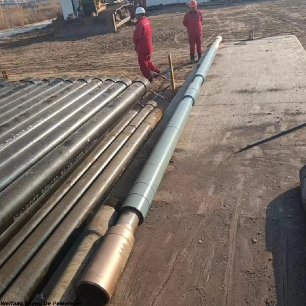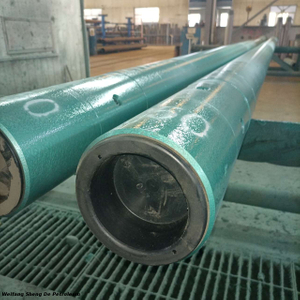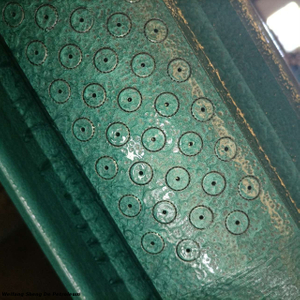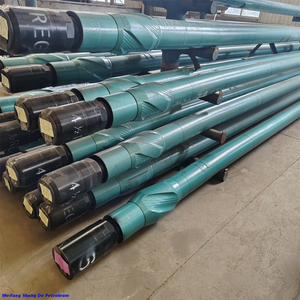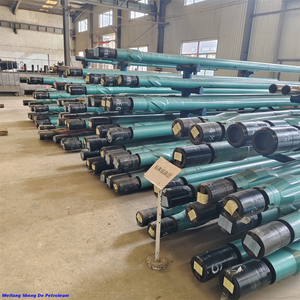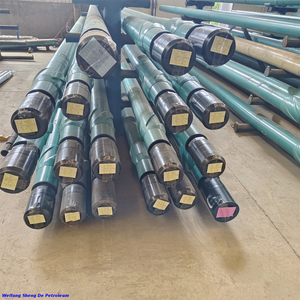Are you struggling to choose between a Positive Displacement Motor (PDM) and a turbine for your industrial application? These two systems are essential in different sectors, but they function in very distinct ways. In this article, we'll break down the key differences between these two systems. You'll discover how they work, where they're used, and which one is best suited for your specific needs.
What is a Positive Displacement Motor (PDM)?
Definition and Key Features
A Positive Displacement Motor (PDM) is a type of hydraulic motor that converts hydraulic fluid into mechanical power. This motor relies on a rotor and stator mechanism. When hydraulic fluid flows through the motor, it creates pressure that moves the rotor inside the stator, generating mechanical torque. This process allows PDMs to drive machinery, such as drill bits, independently of surface rotation. One of their distinct advantages is their ability to maintain constant torque, regardless of speed fluctuations.
Rotor: The rotor is the internal component that rotates due to fluid pressure, turning the motor's output shaft.
Stator: Surrounding the rotor, the stator helps to channel the hydraulic fluid, creating the cavities that lead to the torque generation.
Applications of PDMs
Oil and Gas Drilling: PDMs are crucial for tasks such as directional drilling, performance drilling, and wellbore cleaning, where consistent torque is required.
Industrial Uses: Beyond drilling, PDMs are also essential for milling, coring, and underreaming, providing constant torque and reliability in high-demand tasks.
What is a Turbine?
Definition and Key Features
A turbine is a mechanical device that converts fluid energy into mechanical energy. When a fluid like water, steam, or air flows through the turbine, it spins the rotor, converting the energy in the fluid into rotational power. This power is then used to drive various industrial processes.
Several types of turbines exist, each specialized for different functions:
Water Turbines: Commonly used in hydroelectric power plants, they convert the potential energy of flowing or falling water into mechanical energy.
Steam Turbines: Primarily found in power plants, they convert the energy from steam into mechanical energy for generating electricity.
Gas Turbines: Used in gas-powered engines and aircraft, these turbines harness energy from the combustion of gases.
Wind Turbines: These turbines convert the kinetic energy of wind into mechanical power, often used for renewable energy production.
Applications of Turbines
Turbines are vital across various sectors:
Energy Generation:
Electrical Power: Steam, gas, and water turbines are essential in generating electricity in power plants.
Wind Energy: Wind turbines are integral to producing renewable electricity.
Industrial Applications: Turbines are used in systems requiring continuous fluid flow, such as pumps, compressors, and fans.
Key Differences Between Positive Displacement Motors and Turbines
Working Principle
PDMs generate mechanical power by converting hydraulic fluid pressure into motion via a rotor and stator system. As fluid moves through the motor, it rotates the rotor and generates torque. In contrast, turbines operate by using fluid dynamics to spin blades or rotors, extracting mechanical energy from the fluid's motion.
Torque and Speed
PDMs are known for their ability to maintain constant torque, regardless of the speed at which they operate. This makes them ideal for tasks that require steady, high-torque output, such as drilling in tough environments. Turbines, however, typically trade torque for speed, making them ideal for high-speed operations, but their torque output tends to fluctuate.
Efficiency
PDMs are efficient in applications that demand reliable power, especially in drilling. They excel in environments where consistent torque is necessary. On the other hand, turbines are highly efficient for large-scale power generation, particularly in power plants, but they can face performance variability when used in smaller or specialized applications.
Applications
PDMs are primarily used in industries like oil and gas drilling, where reliable torque and precision are critical. Turbines, on the other hand, are versatile and used in applications ranging from large-scale power generation to industrial machinery requiring fluid-driven mechanical energy.
Advantages of Positive Displacement Motors
Efficiency and Power
PDMs provide a continuous power output, essential for high-pressure tasks like drilling in challenging conditions. This ensures smooth, reliable performance, even in demanding environments.
Reduced Wear and Tear
One of the main advantages of PDMs is their low-friction bearing sections. These reduce heat buildup, minimizing wear and extending the motor's lifespan. This durability translates to fewer maintenance needs and lower operational costs over time.
Corrosion Resistance
PDMs are designed to withstand harsh environments, such as oil and gas drilling. They are built with corrosion-resistant materials that allow them to maintain optimal performance, even when exposed to abrasive fluids or extreme temperatures.
Advantages of Turbines
High Efficiency in Power Generation
Turbines are highly efficient in converting fluid energy into mechanical power, making them perfect for large-scale operations like power generation. They are used in various industries for producing electricity, from steam turbines in power plants to wind turbines for renewable energy generation.
Variety of Fluid Types
One of the greatest strengths of turbines is their ability to operate with multiple types of fluids. Turbines can efficiently handle water, steam, air, and combustion gases, which makes them suitable for a variety of applications:
Steam Turbines: Great for electricity generation in power plants.
Gas Turbines: Commonly used in aviation and power generation.
Wind Turbines: Used for renewable wind energy production.
Other Considerations When Choosing Between PDMs and Turbines
Cost and Maintenance
Cost and maintenance are crucial factors in deciding whether a PDM or turbine is best for a project. PDMs often have lower operational costs due to their simple design and fewer moving parts, while turbines can require more frequent maintenance, particularly in systems that handle high-speed or high-pressure fluids.
Adaptability to Different Conditions
PDMs are more adaptable for environments with fluctuating torque needs, such as drilling operations, while turbines excel in conditions requiring constant power output, such as in energy generation.
Environmental Impact
Both PDMs and turbines can have a lower environmental impact in specific contexts. Turbines are generally preferred in energy generation for clean energy production, especially wind and water turbines. However, PDMs, when used in industrial applications, help reduce energy consumption by maintaining consistent and efficient power.
Conclusion
Throughout this article, we've discussed the significant differences between Positive Displacement Motors (PDMs) and turbines. PDMs are ideal for applications requiring steady torque and reliability, such as drilling, while turbines are better suited for large-scale power generation. By understanding their key features and advantages, you can make a more informed decision about which system fits your specific industrial needs.
FAQs
Q: What is a Positive Displacement Motor (PDM)?
A: A Positive Displacement Motor (PDM) converts hydraulic fluid into mechanical energy, providing consistent power, especially in drilling operations. It uses a rotor and stator system.
Q: How do turbines generate power?
A: Turbines convert fluid energy into mechanical energy by using the flow of fluids like steam, air, or water to spin blades or rotors, which then perform work.
Q: What are the key differences between PDMs and turbines?
A: PDMs provide steady torque for tasks like drilling, while turbines excel in large-scale power generation and can handle multiple fluid types. Their design is optimized for different industrial applications.









